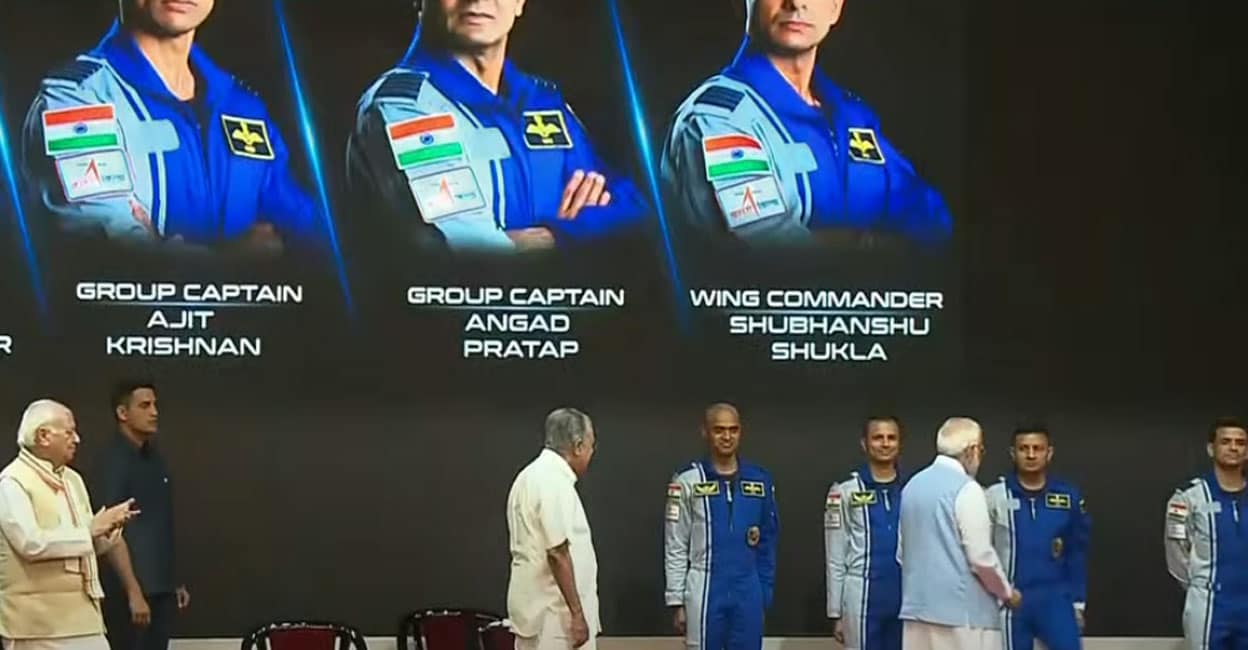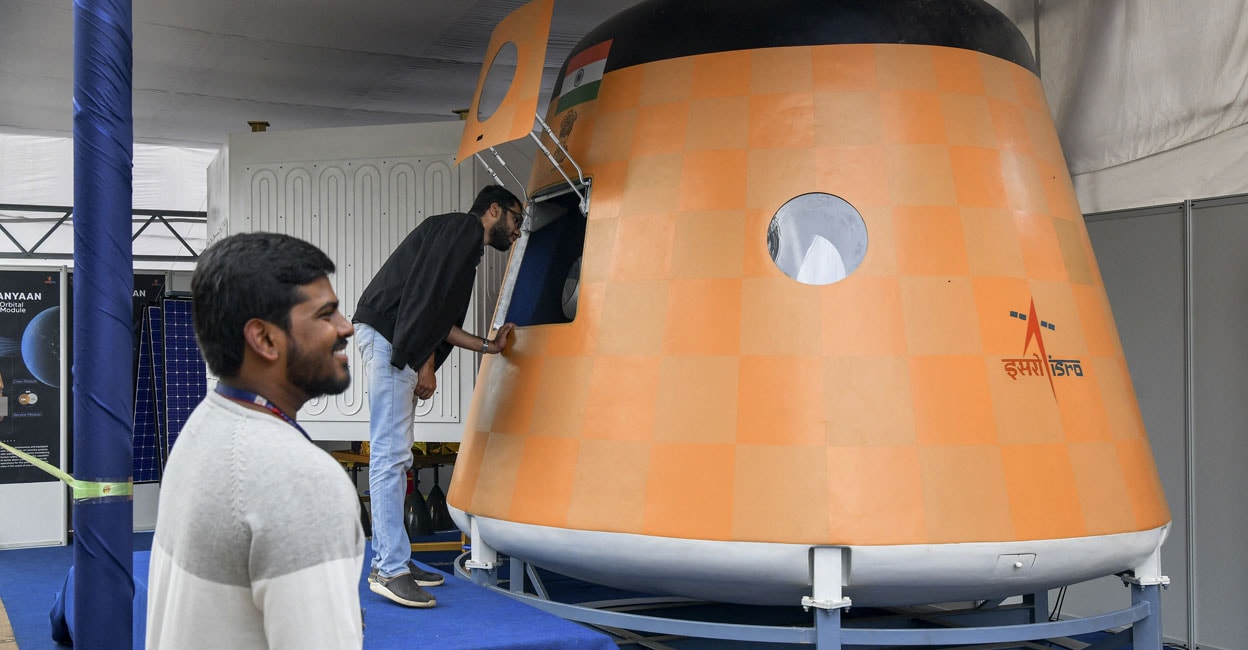Gaganyaan: Kerala native among 4 test pilots announced by PM Modi for manned space mission

Mail This Article
The names of the prospective astronauts for India’s first manned space mission - Gaganyaan - are finally out. They are fighter pilots group captain Prashanth Balakrishnan Nair, group captain Angad Prathap, group captain Ajit Krishnan and wing commander Shubhanshu Shukla.
Among them, Prashanth is a native of Nenmara in Palakkad, Kerala, who serves as an Air Force Group Captain. They were presented 'wings' by Prime Minister Narendra Modi at Vikram Sarabhai Space Centre where he had arrived on Tuesday to dedicate three significant additions to ISRO's infrastructure: Trisonic Wind Tunnel at VSSC; Semi Cryogenics Integrated Engine and Stage Test Facility at ISRO Propulsion Complex, Mahendragiri; and PSLV Integration Facility at Satish Dhawan Space Centre, Sriharikota.
The chosen pilots, who underwent rigorous training in Russia and at ISRO's Human Space Flight Center in Bengaluru, include three who will eventually embark on the space journey, with the fourth serving as a backup.
For the maiden Indian human space flight mission, ISRO collaborated with the Indian Navy to select the crew from a pool of talented test pilots. These pilots underwent a battery of clinical, aeromedical and psychological tests. Finally, the National Crew Selection Board recommended four test pilots from the Indian Air Force for the Ganganyaan Crew Training Programme. The selected crew members were trained at the Gagarin Cosmonaut Training Centre, Russia, for about 13 months.
This training covered various aspects of the space mission such as anabolic flights, survival training in off-nominal snow, desert, and water landing as well as extreme environmental situations.
After returning, the astronauts are trained in the newly established training facility through the Gaganyaan crew training simulators, mock-ups and state-of-the-art virtual reality tools.
The objective of India's first spaceflight mission, slated for 2025, is to take humans to the Earth's orbit and safely return them. Before that a test mission, named 'GX', scheduled for June 2024, will deploy the robot 'Vyomamitra' into space, tracing the astronauts' future trajectory.
Gaganyaan hopes to demonstrate India's human spaceflight capability by launching a crew of three members to an orbit of 400 km and then returning them in a three-day mission.
But to achieve this, there are several steps to be taken. One, the mission has to manufacture a rocket, which it has already created (LVM-3) but to take a human in this, its safety and reliability have to be scaled up. In ISRO jargon it is called upping the "human rating" of the launch vehicle.
Two, it requires a manned space shuttle. The seats have to be very special. They have to be provided oxygen and water. Human waste has to be removed. Temperature and vibrations should be controlled. These were never part of ISRO's sphere of expertise.
Three, the crew should be safe even if some accident befalls the rocket. So for that, we require a crew escape system is required. On top of this, the mission requires an intelligence system that could automatically control all of these processes. A complex algorithm has to be derived for the purpose.
The unmanned flight on October 21, 2023, was one of the many steps towards the goal of a human flight to space. Integrated airdrop tests, test vehicle missions and the pad abort test have already been done. Two more unmanned flights have to be carried out before humans are taken to space.
Selection of test pilots
The first level selection of the test pilots to get enrolled as astronauts was completed in September 2019 in Bengaluru, reported Times of India. According to the report, the selection was done at the Institute of Aerospace Medicine (IAM), which comes under the Indian Air Force (IAF).
The name of the final four was shortlisted together by IAM and ISRO after multiple rounds of selection. Their training in Russia, after a delay due to the outbreak of the COVID-19 Pandemic, was completed in 2021.



